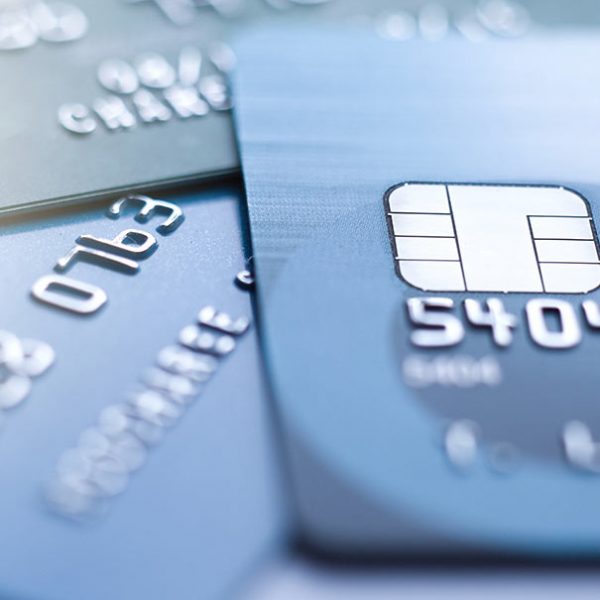Mwai Kibaki, the gentleman of Kenyan politics – The East African
Kenya’s president Mwai Kibaki waves in Nairobi on December 12, 2012 during Jamhuri Day celebrations. PHOTO | AFP
Mwai Kibaki, the man who rose from the sleepy Gatuyaini village, Nyeri, in Central Kenya to become the most celebrated Kenyan president and African statesman died on Friday aged 90.
Kibaki’s death marks the end of an era for one of Kenya’s most suave politicians, whose story is part of the country’s economic history.
Read: Kenya’s third president Mwai Kibaki dies aged 90
For the 50 years that he straddled Kenya’s economy and politics, Kibaki pushed Keynesian principles – like the economist he was – and as president he rebuilt the Kenyan economy from the ashes of destruction left by the Daniel arap Moi regime.
Then National Rainbow Coalition (NARC), Mwai Kibaki (right) and his wife Lucy on December 29, 2002 in Nairobi celebrate after the electoral commission announced Kibaki was the new president of Kenya. PHOTO | AFP
While it was his skills as a politician that saw him survive the rough political terrain in the 1970s and 1980s, his cool mien coupled with wit and intelligence saw him outsmart his challengers in the 1990s to become Kenya’s third president in December 2002.
Kibaki was the last of the 1963 members of parliament to leave the political arena, making him one of the longest serving MPs in Kenya’s history.
Read: Leaders pay tribute to Kenya’s ex-president Mwai Kibaki
How he navigated the Jomo Kenyatta succession minefield, survived the attempt by President Moi to eclipse him and later on endure the falling-out that followed his election as president is a classic case of making painful concessions while balancing the political gains.
In retirement, and dogged by ill health, Kibaki stayed away from national politics, hardly commenting and hardly showing interest.
That was the classic Kibaki.
Born on November 15, 1931, and named Mwai after his uncle from the mother’s side, Kibaki hasn’t talked much about his early life but we know that he was taken to school because he was the youngest in the family. As the missionaries scouted for children to take to school, young Kibaki was picked by his polygamous father, because he was “least useful in the shamba”. He was to turn out to be one of the most useful economists in the country.
Mwai Kibaki receives the report of the commission of inquiry into the 2007/08 post-election violence from Justice Philip Waki. PHOTO | FILE
In 1939, a barefoot Kibaki left home for the 50 cent-a-term Gatuyaini village school, recently established by the Consolata missionaries. Here they taught the new arrivals catechism and elementary education. The Catholic faith remained part of Kibaki’s identity.
Read: Kenyan corporates mourn Kibaki
Unknown to many, this would also mark the rise of the young Kibaki into academia and politics.
His parents, John Githinji Kibaki and Teresia Wanjiku, had seven other children. Like everyone else in the village, they all grew up hewing wood, tilling the land, grazing cattle and milking them. It was this tradition that Kibaki left as he started his journey to international limelight.
From Gatuyaini Primary School, where he was for two years, Kibaki joined Holy Ghost Catholic Missionaries Karima Mission School (now Karima Primary) for the next three years and had to cover 10 kilometres to and from school daily. He passed his exams to proceed to Mathari School, a boarding institution now renamed Nyeri High School, and his father had to sell two goats to pay the annual Ksh18 ($0.16) boarding fee. At Mathari, he learned carpentry and masonry and he would join fellow students in repairing furniture and building materials for the school.
It was his 1947 entry to Mang’u High School, a prestigious secondary school started by Fr Michael Joseph Witte in Kabaa, which would significantly alter the course of his life.
Mang’u was different. It was the citadel of the emerging African elite. The inaugural principal, Fr Farrely, wanted to craft a typical Irish school that had no tight schedules – unlike Alliance High School – and where the students were moulded into the Catholic faith and ethos. He believed that these two led to academic excellence and Kibaki scored straight As.
Read: Kibaki legacy: Thriving economy, free education
The entry of Kibaki into Makerere University College in Uganda in 1951 to pursue a Bachelor of Arts degree in Economics, History and Political Science was a turning point. At Makerere, his leadership emerged as he served as vice-chairman of the Makerere Students Guild between 1954 and 1955. Despite the demands of student leadership and studies, he still emerged among the best students in the Faculty of Arts in 1955, attaining a first class honours degree in Economics. This earned him a scholarship to the London School of Economics for a Bachelor of Science degree in Public Finance. Here, he became the first African to graduate with a first class degree.
Supporters of Mwai Kibaki wait for the official results of the presidential election outside the Kenyan Electoral Commission offices in Nairobi on December 29, 2002. PHOTO | AFP
As he awaited the scholarship, Kibaki had worked briefly as an assistant sales manager in the Uganda division of Shell Company of East Africa.
He was to return to his alma mater (Makerere), after completing his post-graduate studies in London, as an assistant lecturer in the Department of Economics, where he served from 1958 to 1960.
He was then asked to abandon teaching to help manage the affairs of the ruling party Kenya African National Union (Kanu).
Mwai Kibaki arrives for the promulgation of Kenya’s New Constitution at the Uhuru Park grounds on August 27, 2010 in Nairobi. PHOTO | AFP PHOTO
Makerere had moulded him into leadership – something he always acknowledged.
“Makerere is where my academic and intellectual foundation was laid. Many of my leadership skills were developed and nurtured here,” Kibaki said when he received a Doctor of Laws (Honoris causa) degree in January 2012 – 52 years after he left the institution.
As a student leader in Makerere, Kibaki started dabbling in politics and was elected chairman of the Kenya Students Association and vice-chairman of Makerere Students Guild.
It was the events that were taking place in 1960 that catapulted him into Kenyan politics. Kanu and Kenya African Democratic Union (Kadu) had been formed and the new Colonial Secretary Ian Macleod had summoned the entire Legislative Council for a Constitutional Conference in January 1960. One of Kibaki’s schoolmates in Mang’u, Tom Mboya, had turned out to be one of the biggest names among the youth.
Read: Kibaki’s regional policy focused on growing the economy and less on political intrigues
Kibaki had participated in the drafting of Kanu’s new constitution, which brought together several smaller district parties into a solid bloc.
“Some friends and I visited the African Corner Bar on Race Course Road for a drink,” Kibaki recalled in a 2002 issue of the Christian Science Monitor.
“During our conversation … one of us suggested that we draw a constitution for the future. So we borrowed stationery from the counter and started drafting… The exercise eventually led to the birth of Kanu.”
But the rise of Kadu, composed of minority groups, complicated the political matrix. The refusal by Ronald Ngala to join Kanu left the party with an organisational void. Kanu had been registered on June 11, 1960 and, five months into its troubled existence, Mwai Kibaki was hired to put things in order at the headquarters. Thus, in December 1960, and aged only 29, Kibaki left his teaching position and returned to Nairobi.
“We thought it was very foolish at the time to abandon a teaching job at Makerere to be an executive officer of a political party,” recalled Absalom Mwangi, who was in third year when Kibaki left.
Kibaki was the Kanu executive officer during a delicate moment for the party since the Queen of England had legitimised all colonial undertakings in Kenya by signing the Bill of Rights.
Mwai Kibaki holds a Bible as he is sworn in as Kenya’s third president in Nairobi on December 30, 2002. PHOTO | AFP
Kanu was lucky to have Kibaki and they bought him a Peugeot 404.
“We moved around the country a lot,” he recalled in a 1995 interview.
“In just one month, the car had clocked 4,000km. It was great working for a party that was popular everywhere.”
The second challenge that faced Kibaki was that Kanu was to go to the general election in March 1961. So, at the party headquarters, they coined “Uhuru na Kenyatta (Freedom and Kenyatta)” as their slogan.
Kibaki had joined Kanu at the time when the demand for the release of Jomo Kenyatta from jail in Mararal in remote northern Kenyan was in top gear. The Kanu president, James Gichuru, had made it clear that Kanu would not form the government after the March 1, 1961 elections if Kenyatta, described by the Governor Sir Patrick Renison as “leader unto darkness and death,” was not released.
Kibaki, the executive officer, knew that Kanu would not win without internal discipline and when Mr Gichuru summoned an executive meeting in Nairobi but decided to skip it together with Mboya, Kibaki joined other officials in signing a press statement that criticised both men for their behaviour.
“We had to reinstate the principle that leaders were at the service of the organisation and not its masters,” recalled Jaramogi Oginga Odinga, known as the doyen of opposition politics in Kenya, in his autobiography, Not Yet Uhuru.
Kibaki’s style of politics was shown early when he confronted Kadu politicians who had burned an effigy of Jomo Kenyatta. During the press conference, Kibaki said: “Burning an effigy or photograph is a sign of overwhelming hatred. It must be alarming to all African people to know that (Taaita) Toweett hates Kenyatta to such an extent. Kenyatta is the father of our nationalism and the African people will demand a complete dissociation of Kadu from this shameful act.”
Kanu was also trying to balance between the interest of the West and the East, who were jostling to have some control of the party. Kibaki kept them at bay.
The picture of Mboya and Kibaki jumping up in celebration with Kenyatta in the background may best indicate his central role in the Kanu victory in the March 1961 elections, getting 19 of the 33 elective seats in the House of Representatives.
But then he contested the Donhoolm seat in the 1963 elections and was appointed Parliamentary Secretary to the Treasury. Donhoolm was the constituency where the African middle class and politicians were living.
Kibaki’s style of leadership in Kanu had eclipsed other officers and, although he had a deputy, J.O. Washika, little was heard about him and, in 1965, Majoge Bassi MP Zephaniah Anyieni asked President Kenyatta to abolish the position.
“As a matter of fact, in our Kanu constitution, there is no post for an assistant executive officer; there is only one executive officer and that should be Hon Mwai Kibaki,” he said.
Kibaki’s thoughts on the economy would emerge during the debate on the crucial Sessional Paper No 10 of 1965 on African Socialism and its Application to Kenya. Kibaki at this time held the docket of Assistant Minister for Economic Planning and Development, and was thus Mboya’s deputy.
Mwai Kibaki and Raila Odinga sign a political deal following the 2007/08 post-election violence. PHOTO | FILE
During the debate, Kibaki said: “We have been arguing before this paper was written, as if socialism by itself was an end in itself, as if it was a system we could pluck from a tree and apply to our own country… We need to be clear that socialism or any other ism, any economic system, any social system, is a means to the good life, means to happiness, to prosperity, to abundance for the people. We who drafted it are interested in the living people of Kenya, not with dogma, not whether or not somebody who wrote a doctrine was right or wrong… In writing this paper the government was not arguing or trying to justify whether or not Karl Marx or (Friedrich) Engels or (Vladimir) Lenin or Mao Tse Tung or anyone else was right or wrong.”
This was also a critical year at the ministry. In June 1965, Tanzania had thrown the East African nations into a monetary crisis after it announced that it would withdraw from the East African Currency Board, which had been in place since 1919. The departure of Tanzania saw the collapse of the East African Shilling, with the three separate nations issuing their own currencies. Uganda launched its shilling on August 15, 1966 while Kenya inaugurated its own on September 14, 1966. Both countries also launched separate central banks.
In 1966, following a falling-out between President Kenyatta and his vice-president Mr Odinga who went on to form the Kenya People’s Union, Kibaki was elevated into a full Cabinet minister on May 3, 1966, taking the Commerce and Industry docket. Kibaki thus took over the strongest pillars of the East African Union.
How he navigated this space as a Cabinet minister would determine his career in the Kenyatta government. Kibaki became the reliable Kenyatta minister and, although he kept away from the group from Kenyatta’s Kiambu backyard, who built a wall around the president, his respectability as an economist helped him fight for his space in the Kenyatta government.
When relations between Kenya and the Soviet Union appeared to have reached rock bottom due to local politics, Kenyatta dispatched Kibaki, Mboya (Minister for Economic Planning) and Bruce McKenzie (Agriculture and Animal Husbandry) to Moscow to review the Soviet-Kenya Economic Agreement that had been negotiated by Odinga and Joseph Murumbi. It was this renegotiation that saw the completion of the New Nyanza Hospital in Kisumu (now Jaramogi Oginga Odinga Teaching & Referral Hospital).
Three years later, Mboya was shot dead on Nairobi’s Government Street, triggering a tribal feud between the Kikuyus and Luos. Kibaki and JM Kariuki were the two prominent Kikuyus who attended Mboya’s funeral in Rusinga Island in Nyanza. Whether that made him a marked man in the Kenyatta Succession is not clear, as his quiet demeanour always intrigued friends and foes.
Outgoing president Daniel arap Moi waves next to newly elected Kenyan president Mwai Kibaki in Nairobi on December 30, 2002. Kibaki was sworn into office the same day as Kenya’s third president. PHOTO | AFP
He would, 42 years later, unveil a monument in Nairobi in honour of Mboya
In the elections that followed the Mboya crisis, Kibaki almost lost his Donhoolm seat to one Jael Mbogo and shifted base, in 1974, to Othaya Constituency in his county of birth. This was a tactful retreat.
Explaining it later, Kibaki said he was under pressure, ever since he left Makerere, to go back home.
“The folks back home had been after me for years,” he said.
Kibaki’s managerial abilities have never been doubted and in July 1974, Time magazine voted him one of the 150 men and women who would become the world’s new leaders. It was simply because at that time he steered away from divisive politics to boost his image as a national leader.
In his early political career, Kibaki never identified with the then politically correct Gikuyu Embu and Meru Association (Gema), which had been founded in October 1971 with Kenyatta insider Dr Julius Gikonyo Kiano as interim chairman and Jeremiah Nyagah as vice-chairman.
Even when the Gema mantle was taken up by Njenga Karume in April 1973 at a meeting in Nyeri, Kibaki failed to identify with it and it was not surprising that shortly after the assassination of Nyandarua North MP JM Kariuki in March 1975, Kibaki was put under pressure by Gema leaders to have Nyeri District, JM’s birthplace, pledge loyalty to Kenyatta.
Kenya’s then Prime Minister Raila Odinga, former UN Secretary-General Kofi Annan and Kenya’s then president Mwai Kibaki in Nairobi on October 7, 2009. PHOTO | FILE | REUTERS
While Kibaki led a delegation to Kenyatta’s Gatundu home, where he distanced the Nyeri people from “rumours” that Kenyatta and his Minister of State, Mbiyu Koinange, were behind the killing –from hindsight it appears that Kibaki knew how to play politics when required to do so.
But so incensed was Kibaki by some Kiambu leaders that when some Gema leaders started a campaign to block Moi from ascending to the presidency, Kibaki joined hands with Moi and then Attorney-General Charles Njonjo to form their own camp of constitutionalists.
His appointment as Minister for Finance in 1969 was the best indicator of the trust that Jomo Kenyatta had in him.
During his tenure, Kenya recorded economic growth rates of up to seven per cent and Kibaki’s sterling performance in that docket is widely known that World Bank President Robert MacNamara once described him as “one of the greatest economic brains to have emerged from Africa”.
In 1977, the Time magazine recognised Kibaki as one of the African leaders of the 21st century, with high potential. In 1981, the magazine again named him among its annual top 100 people who could lead the world in various capacities.
The death of Jomo Kenyatta in 1978 saw Kibaki elevated to vice-president by President Moi. The Kikuyus from Kiambu and Nyeri were openly jostling for the position via an age-old feud. If Moi wanted to incense the Kiambu group, who were opposed to him, he did it by appointing Kibaki vice-president and circumvented the Gema power brokers. At least Kibaki was a neutralising factor in these battles and was a moderate.
While he served the Moi government, he was dropped as vice-president in 1988, after an attempt to rig him out of the Othaya seat failed. He was retained as a Cabinet minister handling the health docket until 1991, when he quit in December to form the Democratic Party of Kenya (DP) after the reintroduction of multiparty politics in Kenya.
While he was criticised by the new Forum for Restoration of Democracy (Ford) members for failing to join their party, Kibaki’s moderate stance saw him attract many conservative and moderate politicians to his side. The ensuing split of Ford into Ford-Kenya, led by Oginga Odinga, and Ford Asili led by Kenneth Matiba played in Kibaki’s favour and solidified his reputation as a stable and principle-driven person. He came third in the 1992 multiparty elections that saw Moi secure 1.9 million votes, Kenneth Matiba 1.4 million (26 per cent), and him over one million (or 19.5 per cent).
In the opposition, Kibaki distinguished himself in parliament once again as an astute debater and voice of reason and he continued to shape his politics in his bid to oust Moi from power. That would come later in 2002 when a team that included Raila Odinga, Kijana Wamalwa and Charity Ngilu joined hands and formed a strong coalition, the National Rainbow Coalition (Narc). He ran against Moi’s preferred candidate, Uhuru Kenyatta, and trounced him.
Elected on a Narc ticket and with the promise to rout corruption, Kibaki had garnered 62 per cent of the votes while his party won 132 seats in the unicameral parliament of 222 seats.
When he was wheeled to the dais at Uhuru Park, Nairobi, on December 30, 2002, after suffering a motor accident during the campaigns, Kibaki had achieved more than what the missionaries had in mind when they picked the young boy from Othaya to go to school.
As Kenya’s third president, he undid some of the economic mess that had seen the country face negative growth and totter on the brink of collapse.
Muhoozi has often caused controversy on Twitter, including an undiplomatic outburst this month and a threat to invade Kenya.
At the same time, it reiterated its commitment to a peaceful resolution of the conflict through AU-led talks.








